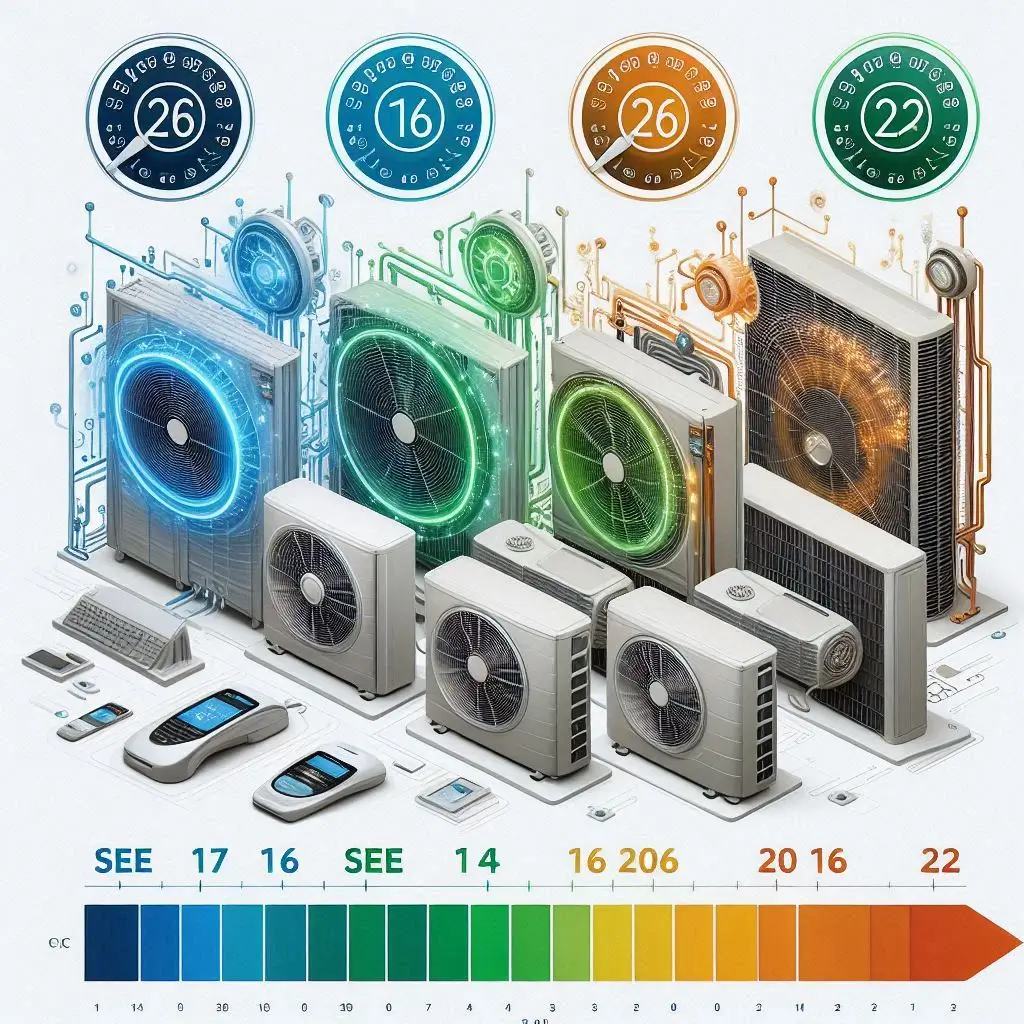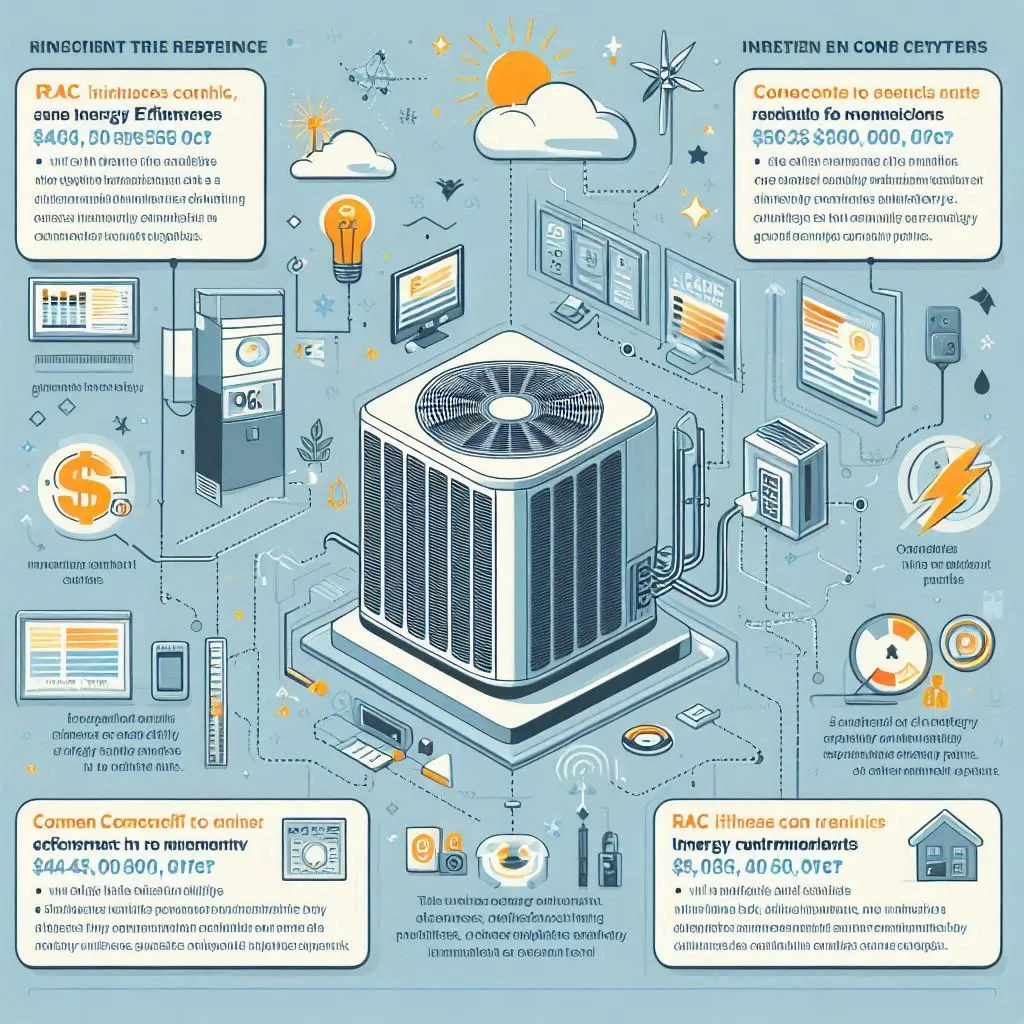What is the Average Cost of Central AC Installation?
The central AC installation cost can vary significantly depending on several factors such as the size of your home, the complexity of the installation, and the brand of the unit chosen. On average, homeowners can expect to pay anywhere from $3,000 to $7,000 for a new central air conditioning system installation. However, it’s important to consider all of the elements that contribute to the total cost before making a decision. Let’s break it down in detail.
Breakdown of Central AC Installation Costs
When estimating the central AC installation cost, several key components are involved. Here is a detailed breakdown:
-
Unit Cost:
The cost of the central air conditioning unit itself generally ranges from $1,000 to $5,000, depending on the size and brand. High-efficiency models or those with advanced features (like variable-speed compressors) can cost more, sometimes exceeding $10,000. -
Labor Costs:
Installation labor typically costs between $75 and $250 per hour. On average, the installation can take anywhere from 4 to 8 hours, depending on the complexity of the setup and whether ductwork needs to be installed or modified. This means labor can account for $500 to $2,000 of the total cost. -
Ductwork:
If your home needs new ductwork or duct modification, this can significantly increase the total cost. Installing ductwork can cost anywhere from $500 to $7,500, depending on the size of the house, the materials used, and the complexity of the duct design. -
Pre-Installation Evaluation:
Before installation begins, it’s recommended to have a pre-installation evaluation, which can cost between $250 and $500. During this evaluation, a technician will assess your home’s cooling needs and ensure your existing system is compatible with the new unit.
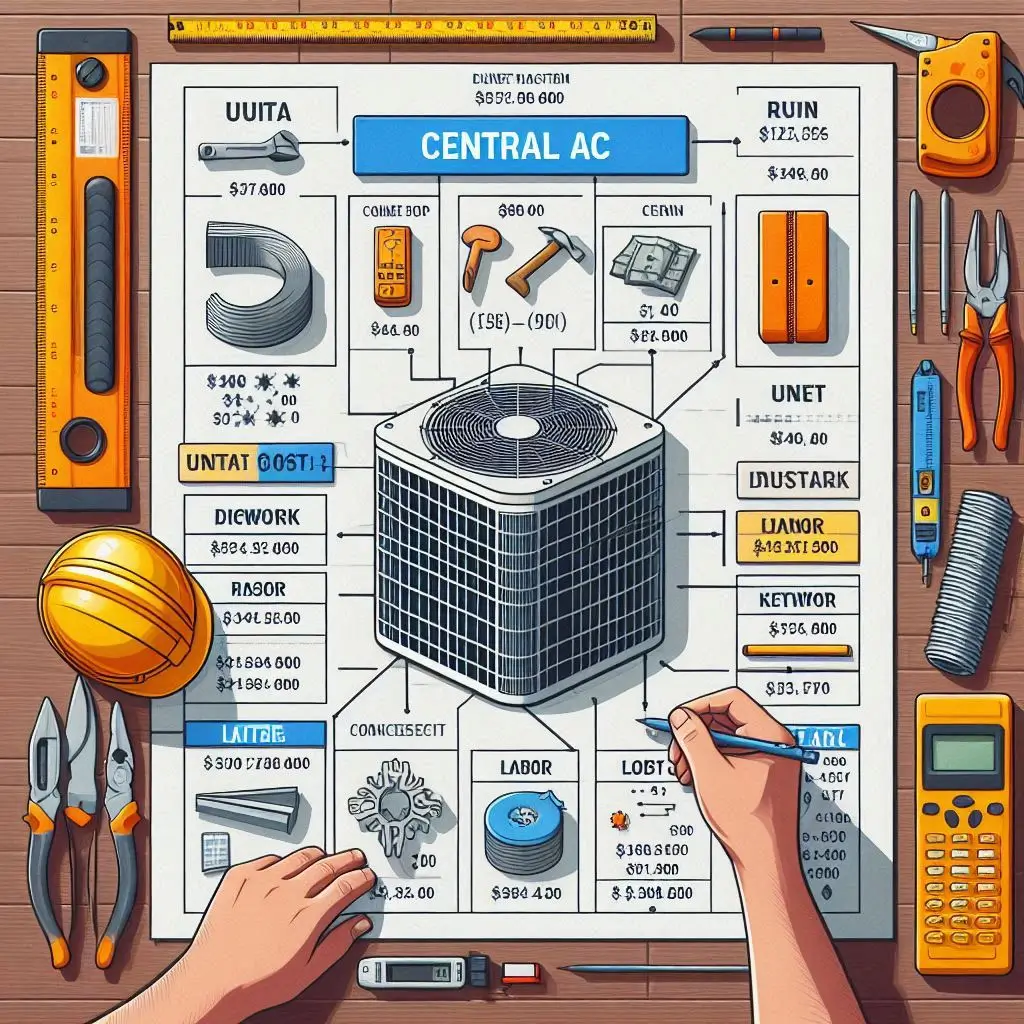
Key Factors Affecting Central AC Installation Cost
Several factors will influence the overall cost of installing a central air conditioning system. Let’s explore the primary factors that will affect your final bill:
-
Size of the AC Unit:
The size of the central air conditioning unit required for your home depends on the square footage and the layout. Typically, the larger the unit, the more expensive it will be. The most common sizes range from 1.5 tons to 5 tons. It’s crucial to get the right size for your space—oversized units can result in higher energy costs, while undersized units may not adequately cool your home. -
Efficiency Rating (SEER):
The Seasonal Energy Efficiency Ratio (SEER) rating measures the efficiency of the air conditioning system. A higher SEER rating means a more efficient unit, which can lower long-term energy costs. Units with higher SEER ratings (14-22) will generally cost more to install but save you money in the long run by reducing energy consumption. Be sure to balance the initial cost and the expected savings over time. -
Ductwork and Insulation:
If your home’s ductwork is old or not properly insulated, you may need to replace or upgrade it. In some cases, additional insulation is also required to improve energy efficiency, adding extra costs to your central AC installation. -
Labor and Location:
Labor costs can vary by location and the complexity of the installation. Homes in remote areas or with challenging access may incur higher labor charges. Additionally, some areas may have higher labor rates based on the demand for HVAC services. -
Installation Complexity:
The complexity of the installation can also affect the cost. For example, homes with multiple stories, tricky roofline access, or pre-existing complications such as incompatible ducts or existing system removal can drive up the total cost.
Factors That Influence Central AC Installation Cost
When calculating the central AC installation cost, several factors will affect the overall price. The most critical elements include the size of the unit, the condition of your home’s existing ductwork, the efficiency of the system you choose, and labor costs. Understanding these factors can help you make an informed decision and ensure you get the best value for your investment.
Size of the AC System
The size of the central air conditioning system is one of the most significant factors influencing the overall installation cost. The size refers to the unit’s cooling capacity, measured in tons. A ton of air conditioning refers to the system’s ability to cool 12,000 British Thermal Units (BTUs) per hour.
-
Smaller Units: For homes with smaller square footage (typically under 1,500 square feet), a 1.5-ton or 2-ton unit may suffice, and this will generally cost less, with installation fees ranging from $3,000 to $5,000.
-
Medium Units: Larger homes, ranging from 1,500 to 2,500 square feet, may need a 3-ton or 4-ton unit, with costs between $4,000 and $6,000.
-
Larger Units: For homes exceeding 2,500 square feet, a 5-ton unit may be required, which could push the installation cost upwards of $6,000 to $8,000, depending on the factors listed below.
Tip: Sizing your unit correctly is crucial. Too small a unit will struggle to cool your home, while an oversized unit will cycle on and off too frequently, leading to higher energy consumption and increased wear and tear.
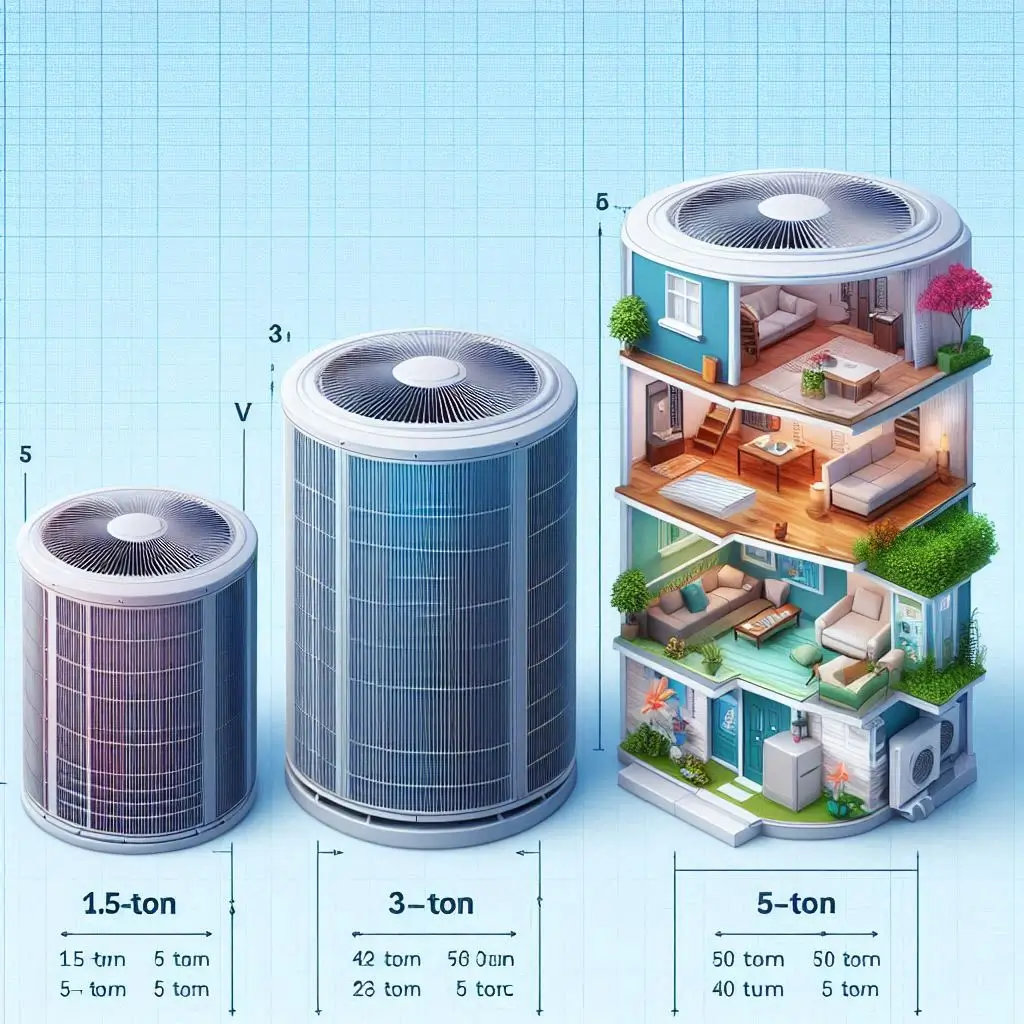
Ductwork and Design Considerations
The condition and design of your ductwork play a vital role in determining the final cost of central AC installation. If your existing ductwork is outdated, damaged, or improperly designed, it may need to be replaced or upgraded to accommodate the new system.
-
Old or Inefficient Ductwork: In some cases, ductwork may not be able to support the airflow needs of a new system. Replacing old ducts can add $1,500 to $5,000 to your installation costs.
-
New Ductwork Installation: If your home doesn’t have ducts or they need a complete overhaul, the cost can range from $3,000 to $7,500 depending on the layout and size of the house.
-
Duct Insulation: Adding insulation to the ducts can help improve energy efficiency. This may increase costs by an additional $500 to $2,000, depending on the material and size of the ducts.
Tip: Ensure that the ductwork is properly sized and sealed to prevent air leaks, which can drastically reduce the efficiency of your central AC system.
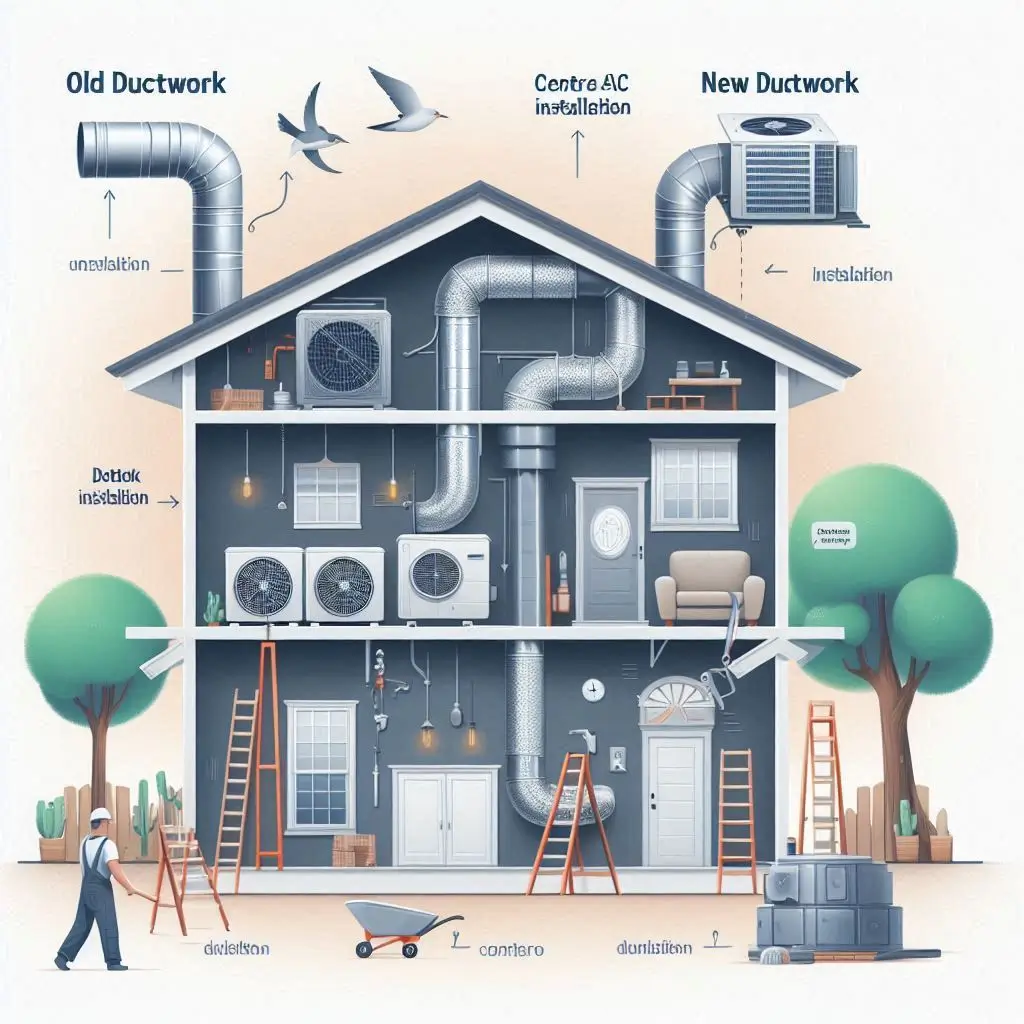
Type of Central Air Unit and SEER Rating
The type of central air unit you choose and its Seasonal Energy Efficiency Ratio (SEER) rating will also significantly impact your installation cost. The SEER rating measures the energy efficiency of an air conditioning system. The higher the SEER rating, the more efficient the unit is.
-
Standard Units (SEER 13-16): These units are typically the most affordable, with installation costs ranging from $3,000 to $5,000.
-
High-Efficiency Units (SEER 17-22): A more energy-efficient unit will cost more upfront, usually between $5,000 and $8,000, but they offer significant savings on energy bills over time.
-
Variable Speed Units: These units are highly efficient and adjust their speed to maintain the desired temperature, providing better comfort and lower energy consumption. However, they come at a premium price of $7,000 to $12,000.
Tip: Choosing a high-SEER rated unit might increase your initial investment but will reduce long-term operational costs. It’s worth considering if you plan to stay in your home for several years.
Labor Costs and Installation Time
Labor costs account for a significant portion of the total central AC installation cost, often ranging from $1,000 to $2,500. The amount of time required to install the system depends on the complexity of the installation, including any necessary ductwork modifications, equipment setup, and system calibration.
-
Simple Installations: A straightforward installation may only take 4 to 6 hours of labor, leading to lower costs.
-
Complex Installations: In more complex situations, such as replacing an old system, dealing with difficult-to-reach locations, or installing ductwork, the process may take up to 2-3 days and involve higher labor costs.
-
Additional Services: Some installers offer services like system calibration, testing, or post-installation maintenance, which can add to the labor cost.
Tip: Always hire a licensed and insured HVAC professional for installation to ensure the job is done right. DIY installations or unlicensed contractors can lead to future complications and added costs.
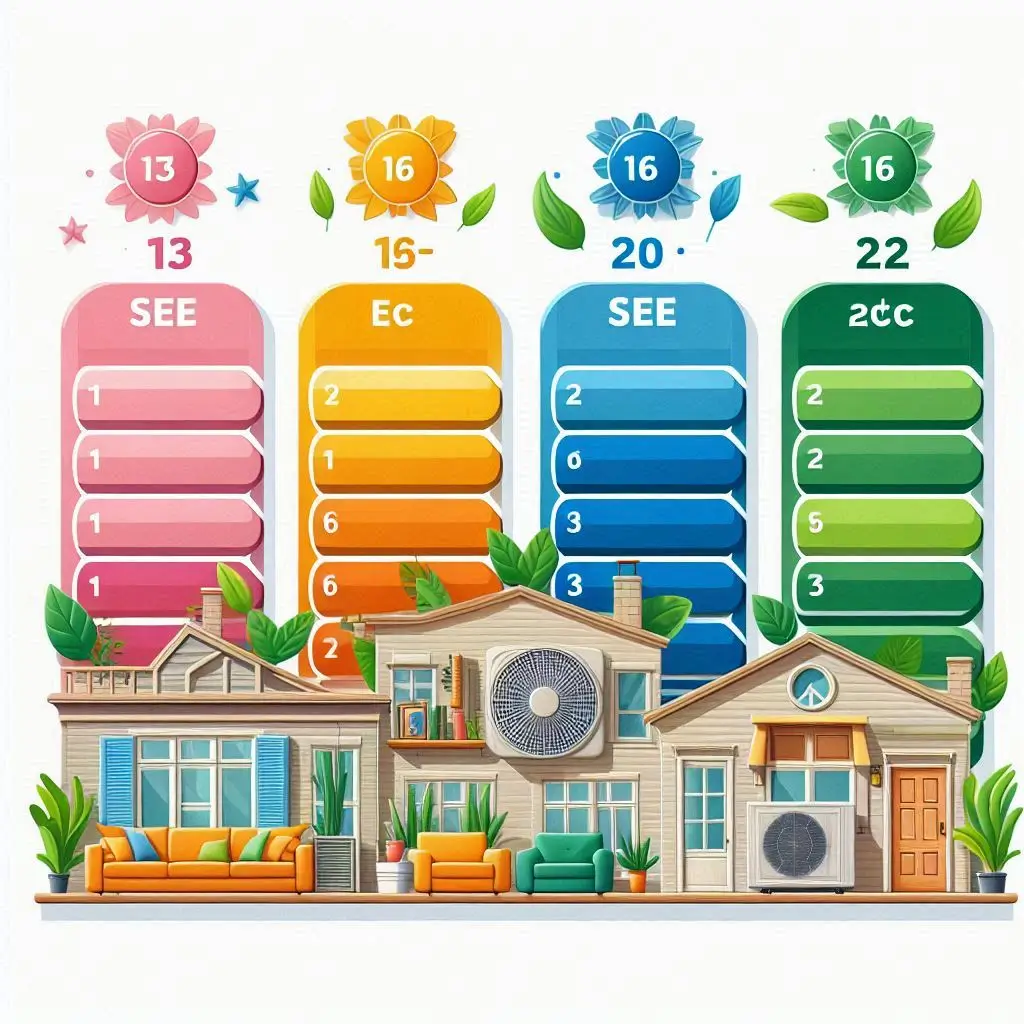
How to Save on Central AC Installation Costs
Installing a central air conditioning system is a significant investment for any homeowner. However, there are ways to reduce your central AC installation cost without compromising on comfort or quality. By being proactive and making informed decisions, you can save money during the installation process. Below are several strategies to help you minimize your installation costs.
Shop Around for Quotes
One of the most effective ways to save on your central AC installation cost is by shopping around for quotes from multiple HVAC contractors. Not all contractors charge the same rate, and by comparing estimates, you can find the best deal. When requesting quotes, ensure that each contractor is providing an itemized estimate that includes:
- Cost of the unit
- Labor fees
- Any additional services (e.g., ductwork, system calibration)
It’s also important to check reviews and ratings of contractors. Lower quotes may be tempting, but make sure the contractor has a strong reputation for quality service. Sometimes, a lower upfront cost can lead to additional expenses down the road due to poor installation or lack of proper warranties.
Tip: Use an online tool to request quotes from several contractors at once, making the comparison process faster and easier.
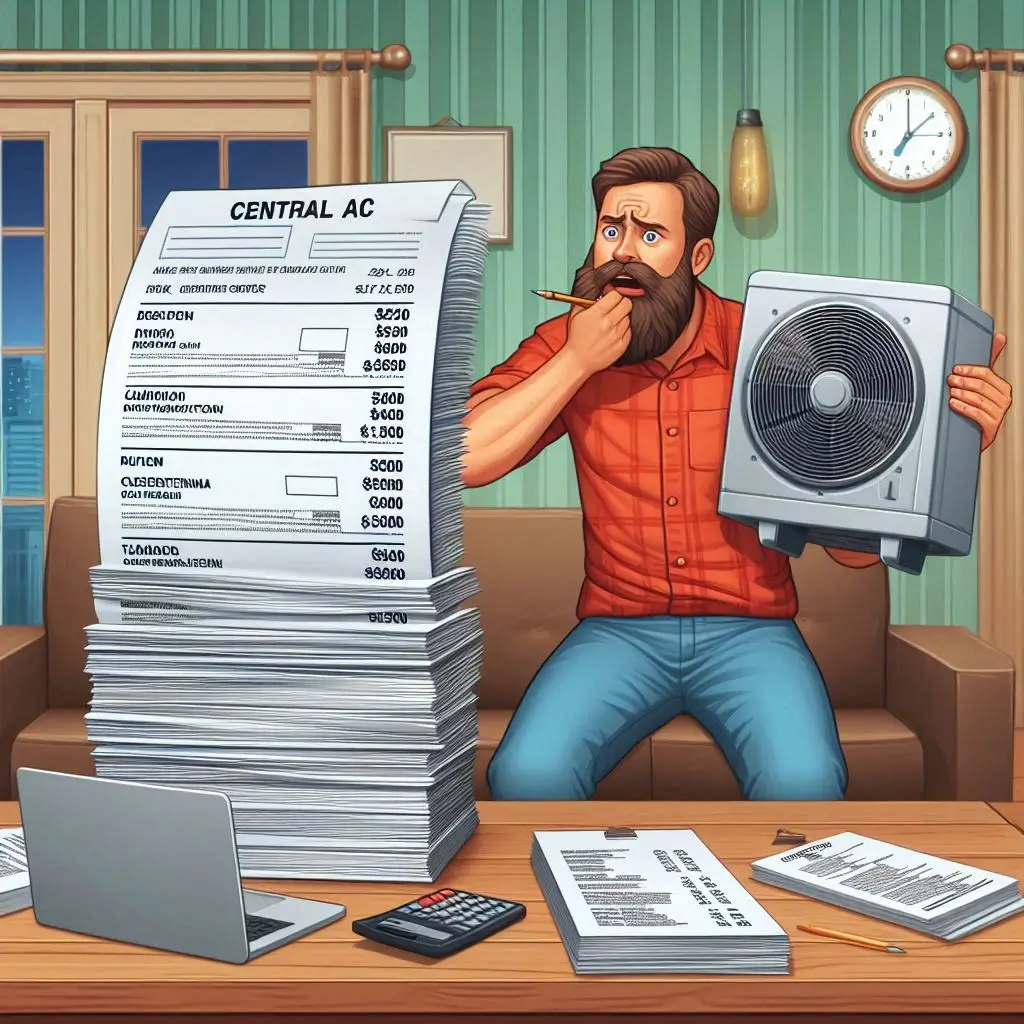
Consider Installing Off-Season
Another way to reduce your central AC installation cost is by scheduling the installation during the off-season. The demand for AC installations is highest during the peak summer months, which can lead to higher prices due to increased labor costs and limited availability of contractors.
-
Winter Months: The best time to install a central AC system at a lower cost is during the cooler months, typically from late fall to early spring. During this period, HVAC companies are less busy, and they may offer discounts or lower prices to attract customers.
-
Fall: Scheduling your installation in the fall is a great strategy, as technicians are preparing for the upcoming heating season and may be more flexible with their pricing.
Tip: Even though you may not need the AC during these months, scheduling in the off-season could lead to significant savings on both installation and service.
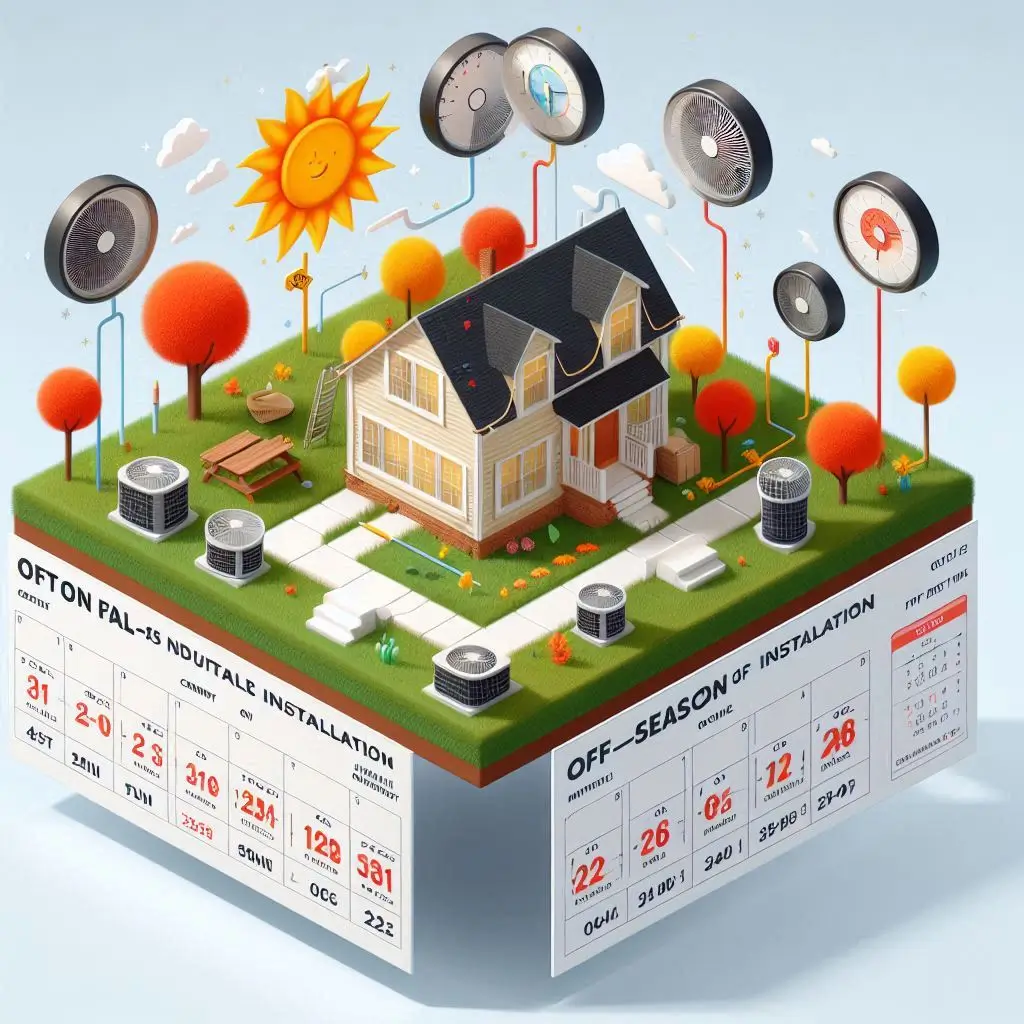
Look for Available Rebates
Many manufacturers, utility companies, and government programs offer rebates and incentives for installing high-efficiency central AC systems. These rebates can help offset the initial cost of the unit, lowering your central AC installation cost significantly.
-
Manufacturer Rebates: Some manufacturers offer seasonal promotions or rebates on new air conditioning units, especially those with high SEER ratings. Be sure to ask your HVAC contractor if they’re aware of any ongoing promotions.
-
Utility Company Rebates: Many utility companies offer rebates or discounted installation services for energy-efficient units, as they help reduce the overall energy consumption of the grid. Check with your local utility provider to see if you qualify for such programs.
-
Federal and State Incentives: In some regions, there are government tax incentives available for installing energy-efficient systems. These can help reduce your out-of-pocket expenses by a significant margin.
Tip: Always ask your HVAC provider about available rebates and ensure that they help you submit the required forms to claim these benefits.
Evaluate Smaller Units or Alternative Systems
If you’re looking to save money on your central AC installation cost, consider evaluating smaller units or alternative air conditioning systems that may be better suited to your needs. While larger central AC systems are ideal for large homes, smaller or more efficient systems can reduce installation and operating costs for smaller homes or apartments.
-
Smaller Units: For homes under 1,500 square feet, a 1.5-ton or 2-ton unit may be sufficient, which could lower both installation and energy costs.
-
Ductless Mini-Split Systems: If your home doesn’t have existing ductwork, consider a ductless mini-split system, which can be more cost-effective to install and doesn’t require the installation of new ducts. A ductless system can cost between $3,000 and $5,000, significantly less than a full central AC installation.
-
Heat Pumps: Another alternative is a heat pump, which provides both heating and cooling. These systems can be more energy-efficient than traditional central AC systems and are often eligible for rebates.
Tip: Consult with an HVAC expert to determine whether a smaller or alternative system would be a good fit for your home’s specific needs.
Additional Costs to Consider for Central AC Installation
While the central AC installation cost is a significant portion of your total expenditure, there are additional costs that homeowners must be aware of to budget properly. These costs can vary depending on your home’s requirements, the complexity of the installation, and the condition of existing systems. Understanding these extra expenses will help you plan better and avoid unexpected financial burdens.
Pre-Installation Evaluation
Before installing a new central AC system, it’s essential to perform a pre-installation evaluation. This evaluation ensures that your home is suitable for the new system and helps the HVAC contractor determine the correct size and specifications for your unit. The cost of a pre-installation evaluation can range between $250 and $500.
-
Why is it necessary?: The evaluation assesses factors like your home’s square footage, insulation, and existing ductwork, ensuring the system will operate efficiently and effectively.
-
What does it include?: The evaluation typically includes an assessment of your home’s energy needs, checking the insulation levels, verifying ductwork conditions, and recommending necessary adjustments.
Tip: While this evaluation adds to the central AC installation cost, it is a crucial step to avoid overpaying for an oversized unit or a system that doesn’t suit your home.
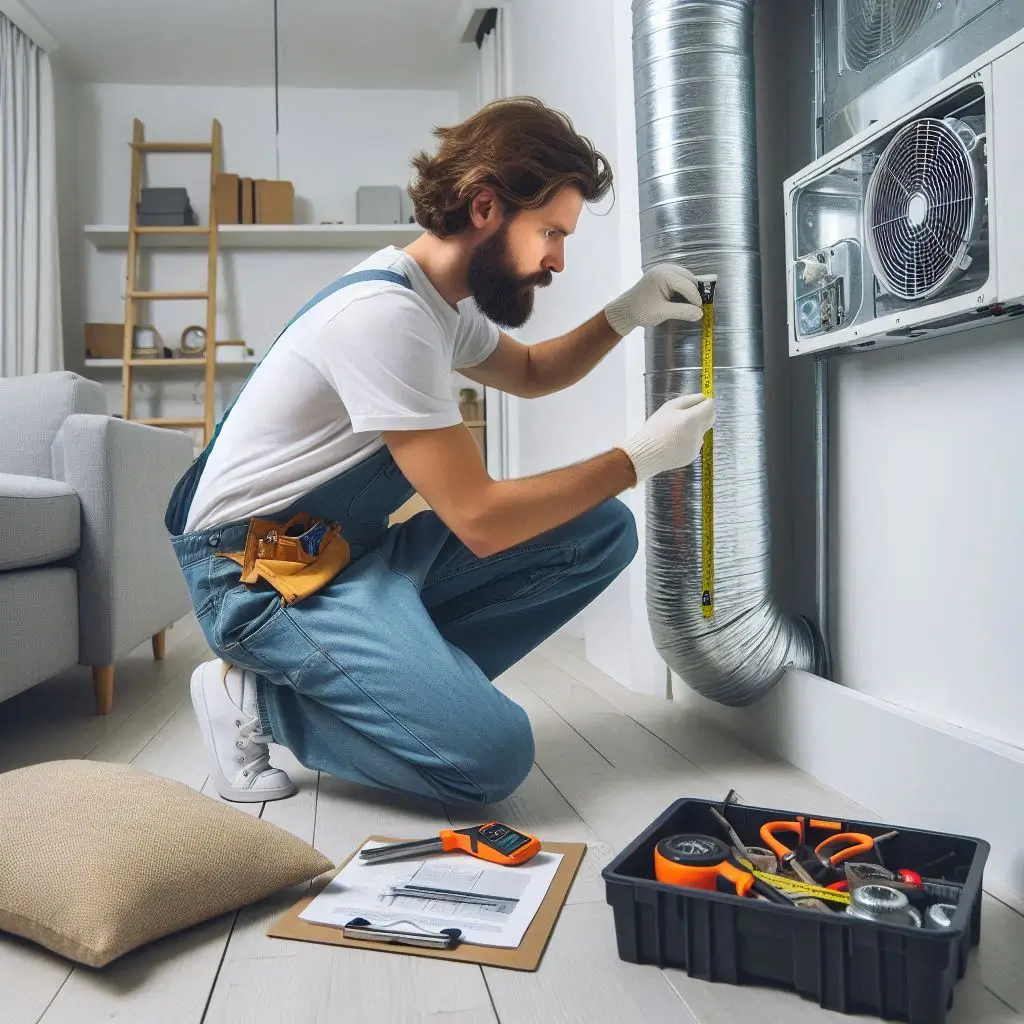
Ductwork Installation or Replacement
Ductwork installation or replacement can significantly impact your central AC installation cost, especially if your home does not already have ducts or if the existing system is outdated. If new ducts are required or the old ones need replacement, the cost can range from $1,000 to $7,500 depending on the complexity of the project.
-
When is it needed?: If your current ducts are leaking air, undersized, or incompatible with the new AC system, they will need to be replaced. Alternatively, homes without existing ducts will need new ductwork installation.
-
What does it involve?: Installing or replacing ducts requires cutting holes in walls, ceilings, or floors, as well as sealing and insulating the ducts to prevent air leaks. This can add significant labor and materials costs to your central AC installation cost.
Tip: Ask your contractor to inspect your existing ducts and provide an estimate for either repairing or replacing them as part of the initial consultation.
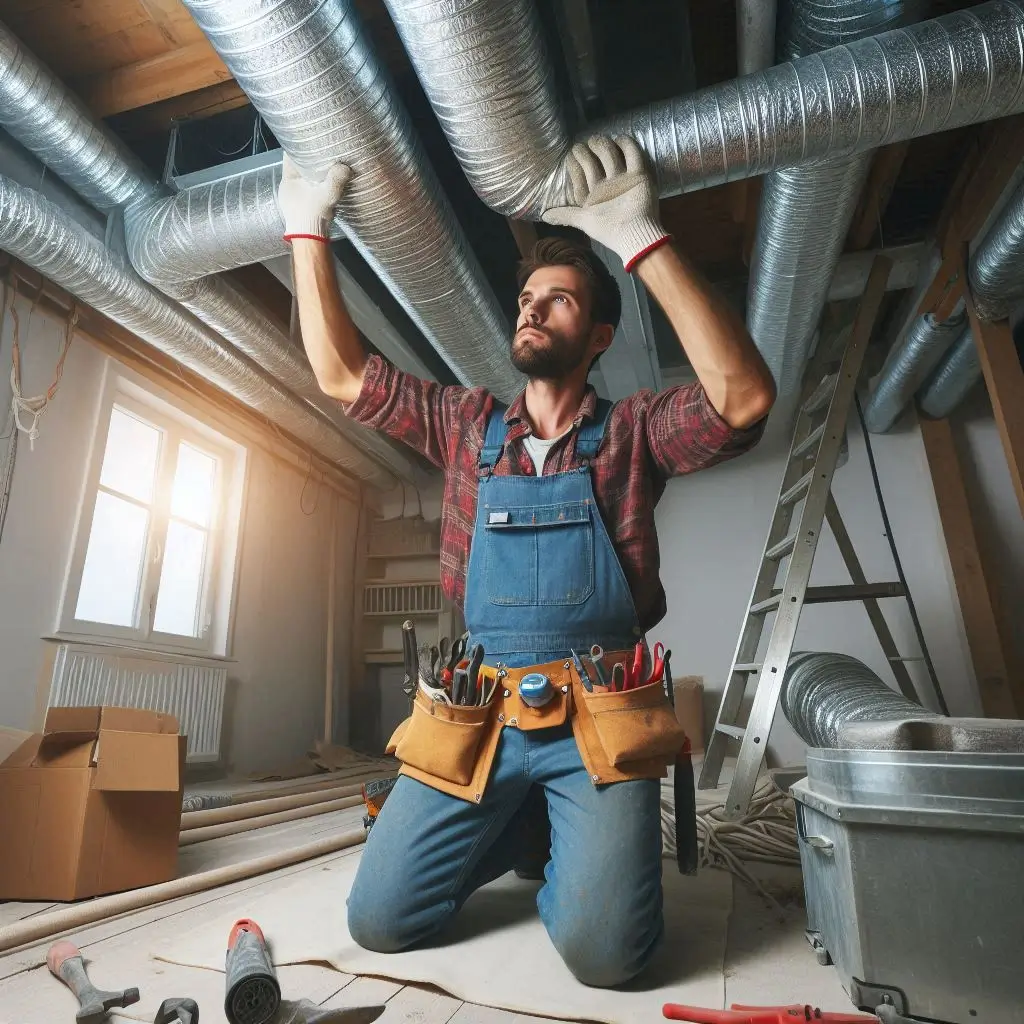
Maintenance and Service Costs Post-Installation
Once your central AC system is installed, it’s crucial to maintain it for optimal performance and longevity. Regular maintenance helps prevent costly repairs and ensures that your unit runs efficiently, reducing your overall energy bills. Here are some maintenance-related costs you should anticipate:
-
Annual Maintenance: The average annual service cost for a central AC system can range from $100 to $300, depending on the service provider and the complexity of the system.
-
Repairs: While regular maintenance can help prevent unexpected repairs, you should still budget for occasional repair costs, which can range from $150 to $1,500 depending on the issue.
-
Extended Warranties: Many HVAC companies offer extended warranties that cover parts and labor for several years. These warranties can add an extra $200 to $500 to your central AC installation cost, but they can provide peace of mind, especially if your unit is expensive or prone to issues.
Tip: Consider signing up for a maintenance contract with your HVAC provider, which may include annual inspections and service at a discounted rate.
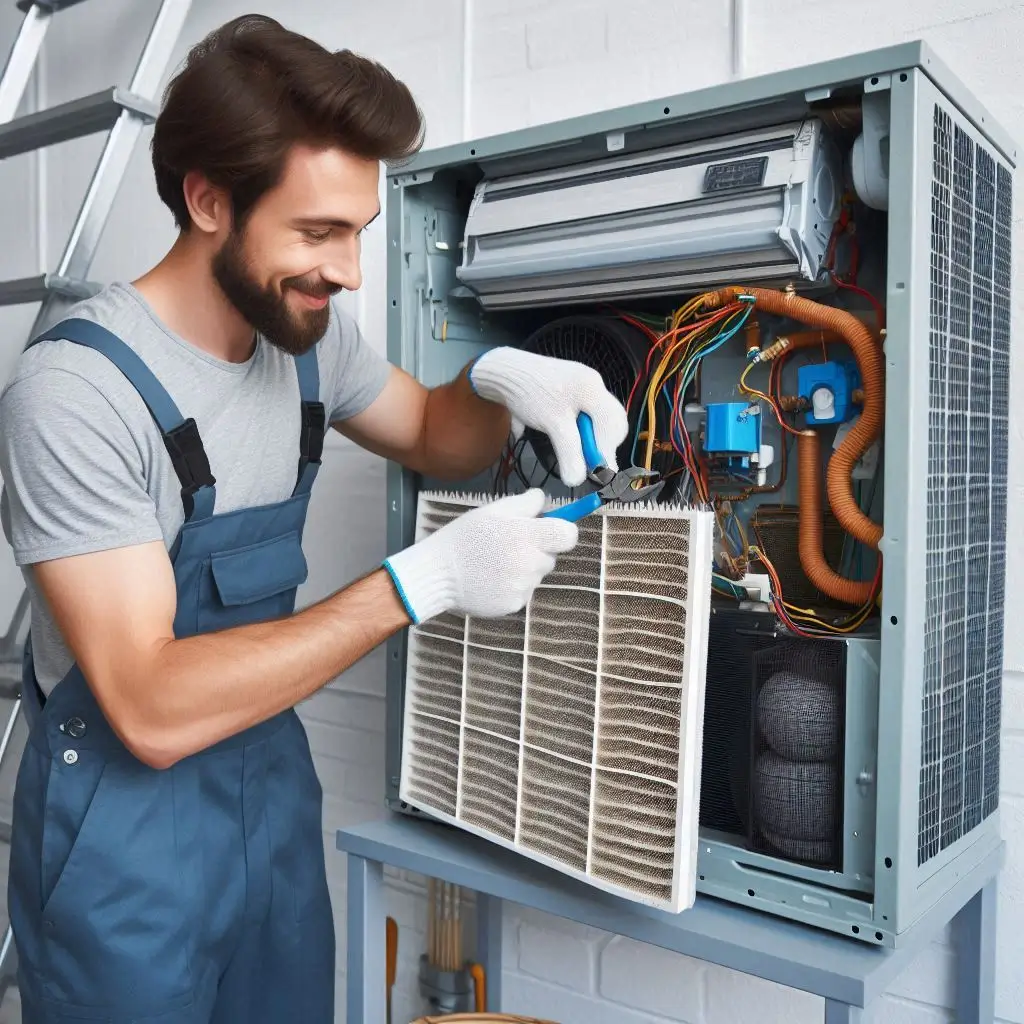
How to Pay for Central AC Installation
Installing a central air conditioning system can be a significant investment, with central AC installation costs ranging from a few thousand to tens of thousands of dollars, depending on factors such as the size of the system, your home’s requirements, and installation complexity. However, there are several ways to finance this expense without draining your savings or going into debt. In this section, we’ll explore various payment options and strategies to help you manage the costs of central AC installation.
Financing Options for Central AC Installation
Many homeowners opt for financing their central AC installation cost because it allows them to spread the payments over time and avoid the upfront financial burden. Financing options are typically offered by HVAC contractors, banks, or third-party lenders, and they vary depending on your creditworthiness and the specific terms of the loan.
-
In-House Financing: Many HVAC companies offer in-house financing with flexible payment plans. These financing programs may offer low or zero interest rates for the first few months or even years, depending on the promotion.
-
Personal Loans: Another option is securing a personal loan from a bank or credit union, which may offer competitive interest rates and flexible terms. Personal loans can be used to cover the entire central AC installation cost, and they don’t require collateral.
-
Credit Cards: If your credit card has a low interest rate or a promotional 0% APR offer, you might choose to finance your central AC installation with your credit card. However, this option is usually only suitable for smaller projects to avoid high-interest charges.

Using Home Equity or Personal Loans
For larger central AC installation costs, many homeowners may choose to tap into their home’s equity or take out a personal loan to cover the expense. This can be a great option if you have significant equity in your home or if you prefer the fixed repayment terms of a loan.
-
Home Equity Loan: A home equity loan allows you to borrow against the equity you’ve built up in your home. This type of loan usually offers lower interest rates compared to unsecured loans, making it an attractive option if you have a substantial amount of equity.
- Pros: Lower interest rates, fixed payments, and potential tax benefits.
- Cons: Your home is collateral, so failing to repay could result in foreclosure.
-
Home Equity Line of Credit (HELOC): A HELOC is another option that allows you to borrow against your home’s equity, but it functions more like a credit card. With a HELOC, you can borrow and repay multiple times within a draw period, offering flexibility if your central AC installation cost exceeds the initial estimate.
-
Personal Loans: If a home equity loan isn’t an option, or if you prefer to keep your home’s equity untouched, personal loans are another viable alternative. Personal loans are unsecured, meaning they don’t require collateral, but they may come with higher interest rates compared to home equity loans.
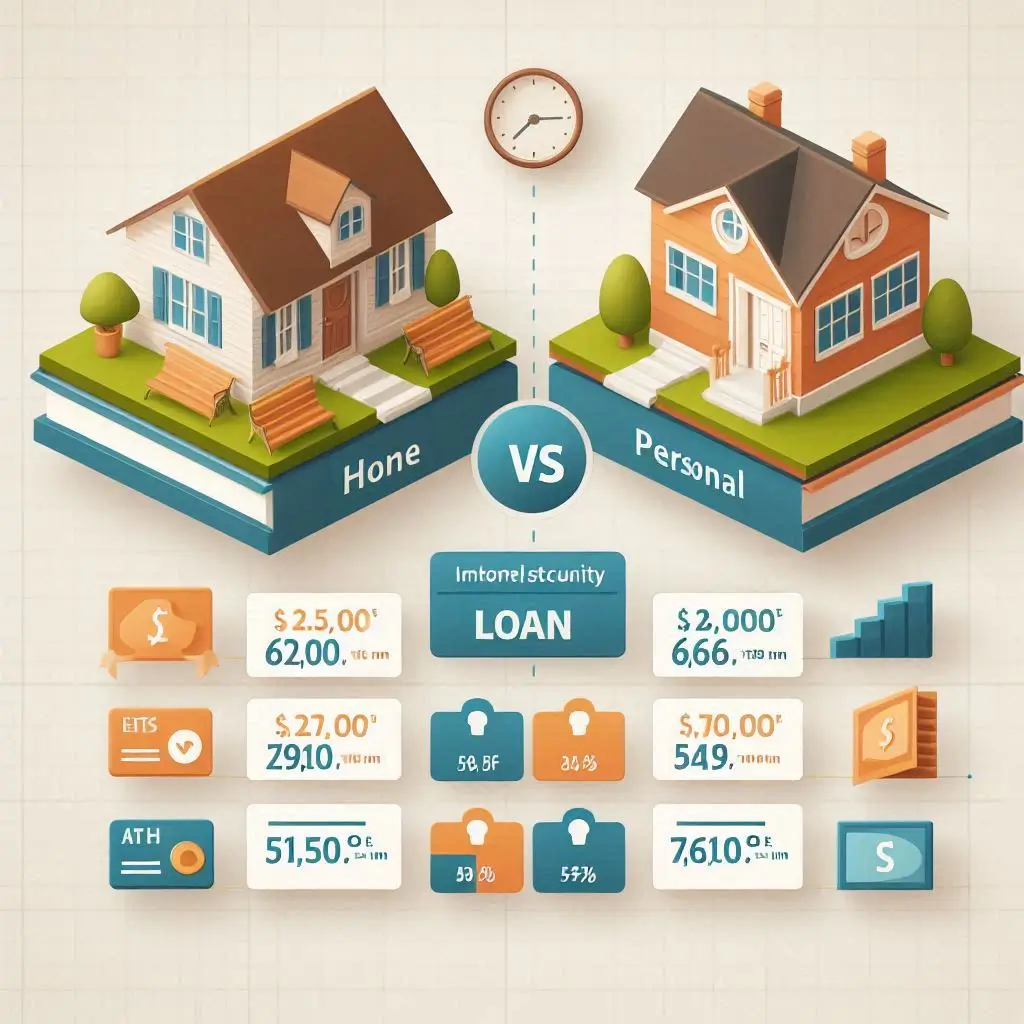
Exploring Rebates and Tax Credits
In addition to financing options, there are various rebates and tax credits that can help reduce the overall central AC installation cost. Many federal, state, and local programs offer incentives for homeowners who install energy-efficient systems, helping to offset the expense.
-
Federal Tax Credits: The federal government offers tax credits for homeowners who install energy-efficient air conditioning systems that meet specific SEER (Seasonal Energy Efficiency Ratio) ratings. These credits can cover a portion of your central AC installation cost, reducing the financial burden.
- Example: The Energy Star program offers up to a $300 tax credit for qualifying HVAC systems. Be sure to check if your new system qualifies.
-
Utility Company Rebates: Some utility companies offer rebates to customers who install energy-efficient systems. These rebates can range from a few hundred dollars to over a thousand dollars, depending on your location and the system you install.
- Example: Florida Power & Light (FPL) offers rebates for energy-efficient air conditioning installations in Florida. Check with your local utility provider to see if such programs are available in your area.
-
State and Local Incentives: Many states and local governments offer additional rebates, incentives, or low-interest financing options for homeowners who install energy-efficient systems. These programs can help reduce both upfront costs and long-term energy bills.
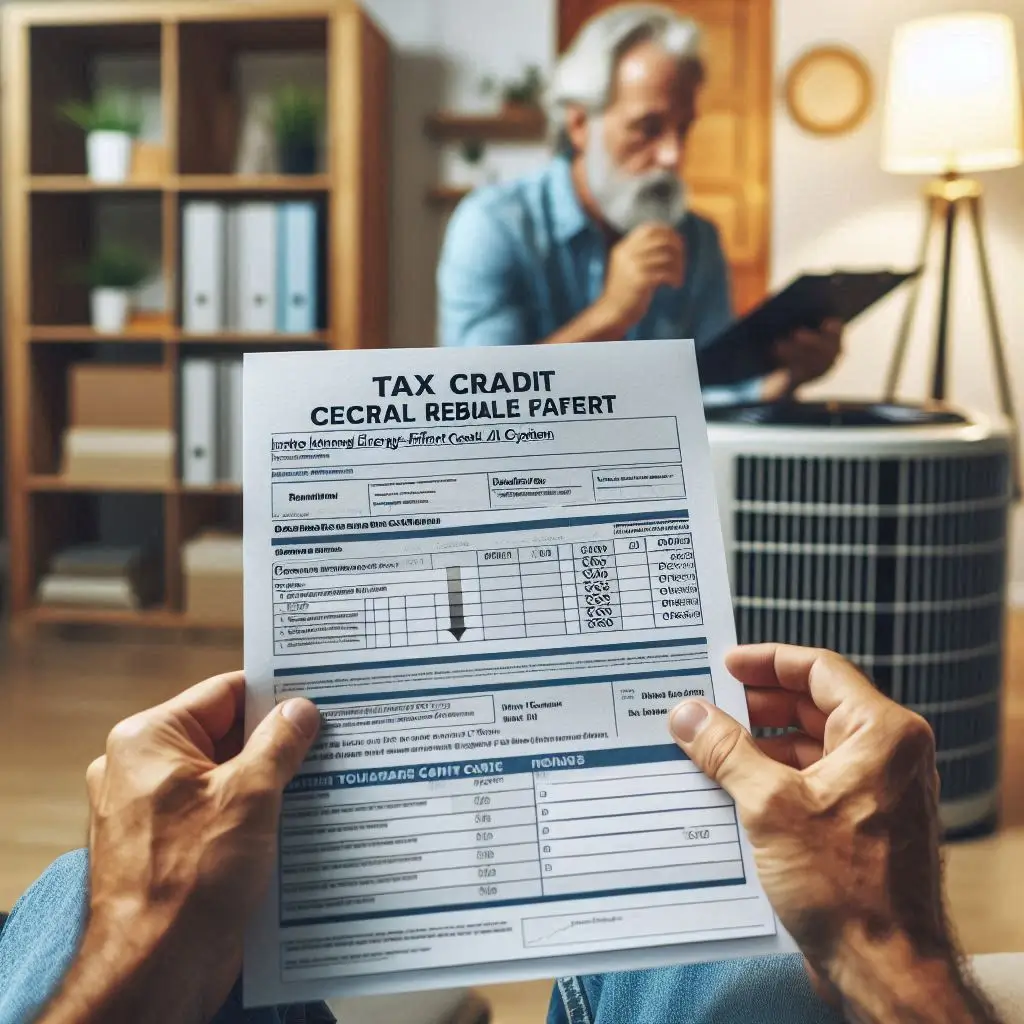
FAQ: Central AC Installation Cost
1. How much does it cost to install central air conditioning?
The central AC installation cost can vary widely depending on several factors, including the size of the system, the type of unit, the complexity of installation, and the region in which you live. On average, homeowners can expect to pay between $3,500 and $7,500 for a central AC system installation. This estimate typically includes the cost of the unit, ductwork, labor, and other associated materials.
- Small Homes: For homes with fewer than 1,500 square feet, the cost can range from $3,000 to $5,000.
- Medium Homes: Homes between 1,500 to 2,500 square feet might see costs ranging from $4,000 to $6,500.
- Larger Homes: For homes over 2,500 square feet, expect costs to exceed $6,500, potentially reaching $12,000 for high-efficiency systems or complex installations.
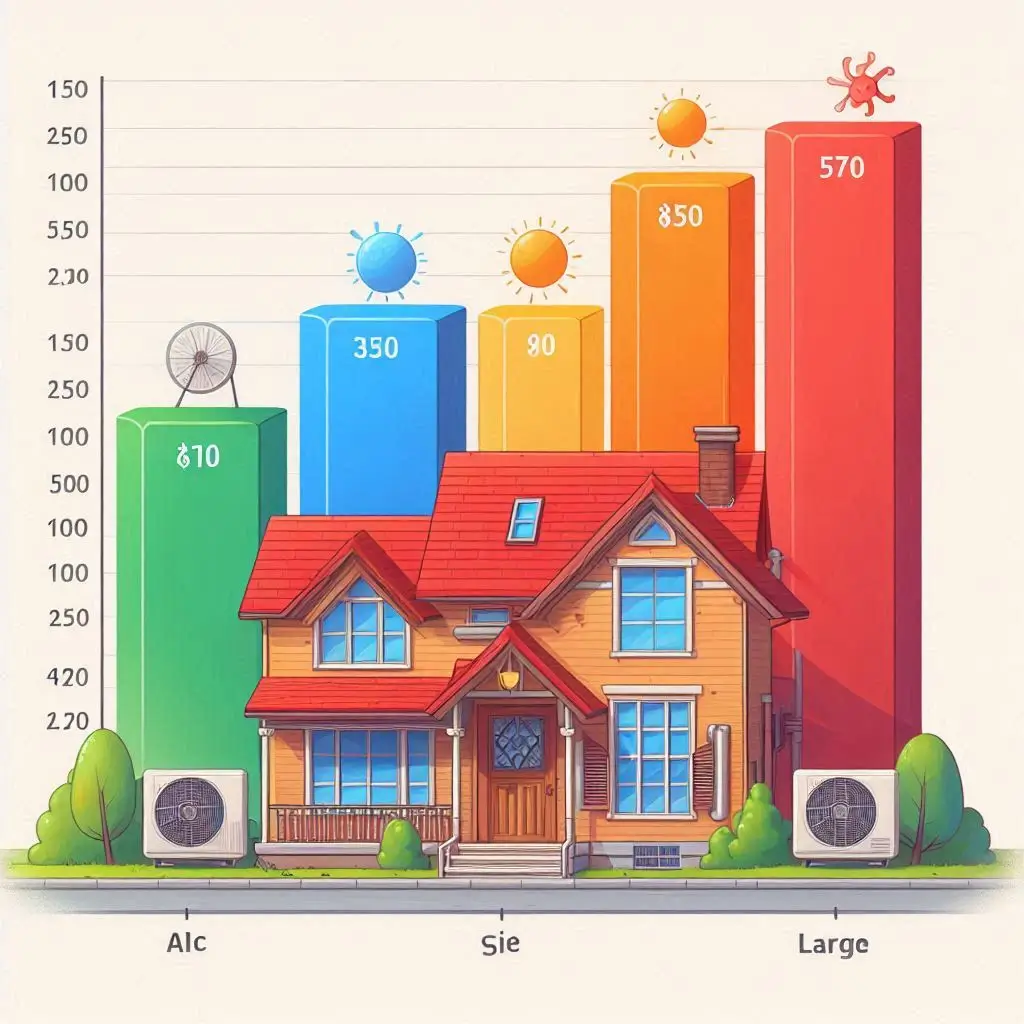
2. What factors influence central AC installation cost?
Several key factors determine the final price of installing a central AC system. These include:
-
Size of the System: The larger the area to be cooled, the larger and more expensive the system will be. This means that homes with high ceilings or multiple floors may require larger, more expensive systems.
-
Ductwork: If you already have ducts in place, the installation will be cheaper. However, new ductwork or replacing old ducts can significantly add to the central AC installation cost.
-
System Efficiency: Air conditioners with higher SEER (Seasonal Energy Efficiency Ratio) ratings are more energy-efficient but come at a higher upfront cost. However, they can save you money in the long run through lower energy bills.
-
Labor Costs: Labor costs can vary depending on where you live and the complexity of the installation. These typically account for 25-40% of the overall central AC installation cost.
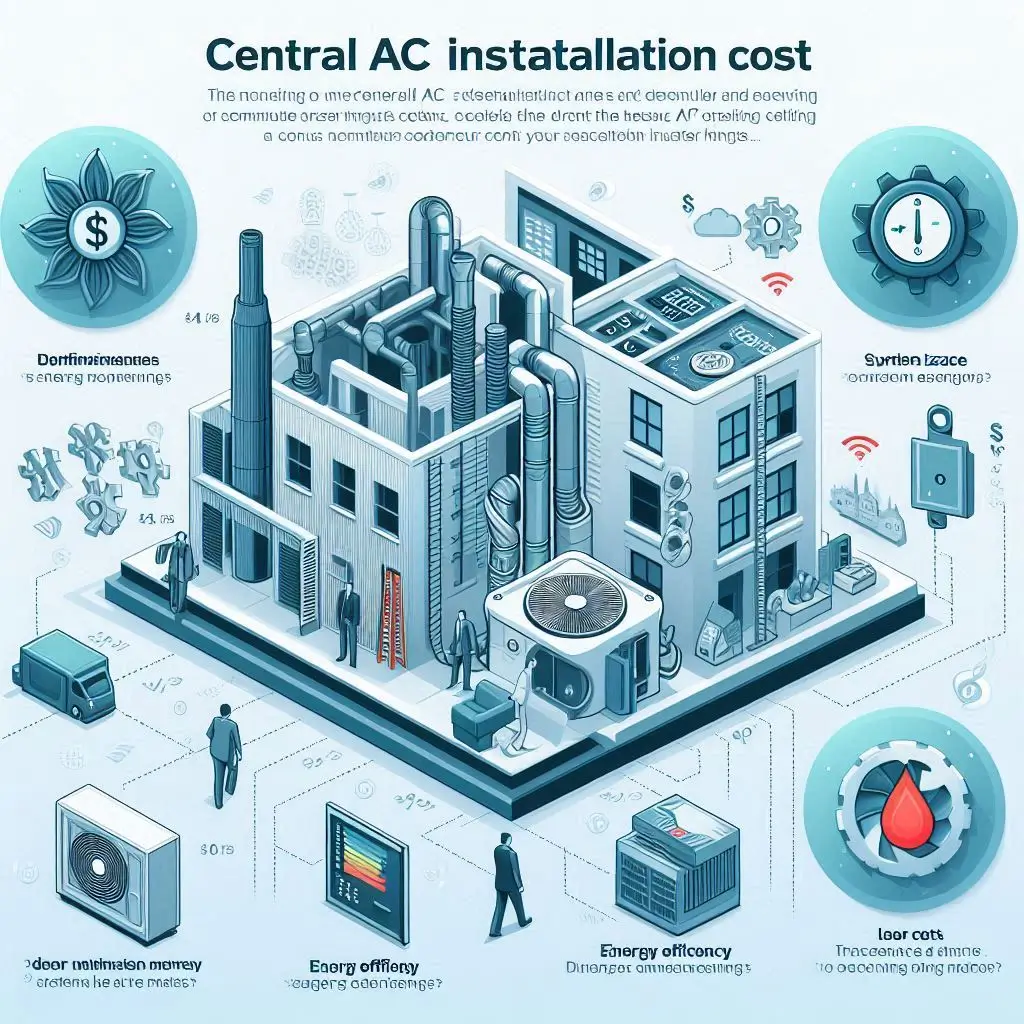
3. Can I reduce my central AC installation cost?
Yes, there are several ways to reduce the cost of installing a central air conditioning system:
-
Shop Around for Quotes: Get at least three quotes from different contractors to compare prices and find the best deal. Don’t just go for the cheapest option—make sure to evaluate their reputation and customer service.
-
Consider Installing Off-Season: Air conditioning demand typically peaks in the summer, so prices for installation may be higher during this time. If you install your system in the fall or spring, you may benefit from lower labor rates and fewer installation requests.
-
Rebates and Tax Credits: Many utility companies and government programs offer rebates and tax credits for energy-efficient air conditioners. These incentives can lower the overall central AC installation cost by hundreds or even thousands of dollars.

4. Is it better to repair or replace my old air conditioner?
If your existing air conditioner is over 10 years old and frequently requires costly repairs, it may be more cost-effective in the long run to replace it with a new central AC system. Modern air conditioners are more energy-efficient and have updated features that can reduce your energy bills significantly.
Some signs it’s time to replace your AC include:
- Frequent breakdowns or costly repairs
- Rising utility bills due to decreased efficiency
- System not effectively cooling your home
- Old system nearing the end of its lifespan (typically 10-15 years)

5. What is the best time of year to install central AC?
The best time to install central AC is during the off-season, typically in the fall or spring. During these months, HVAC contractors tend to have fewer appointments, which means they may offer more competitive pricing and faster service. Additionally, you may avoid the rush of summer installations, which could save you time and money.
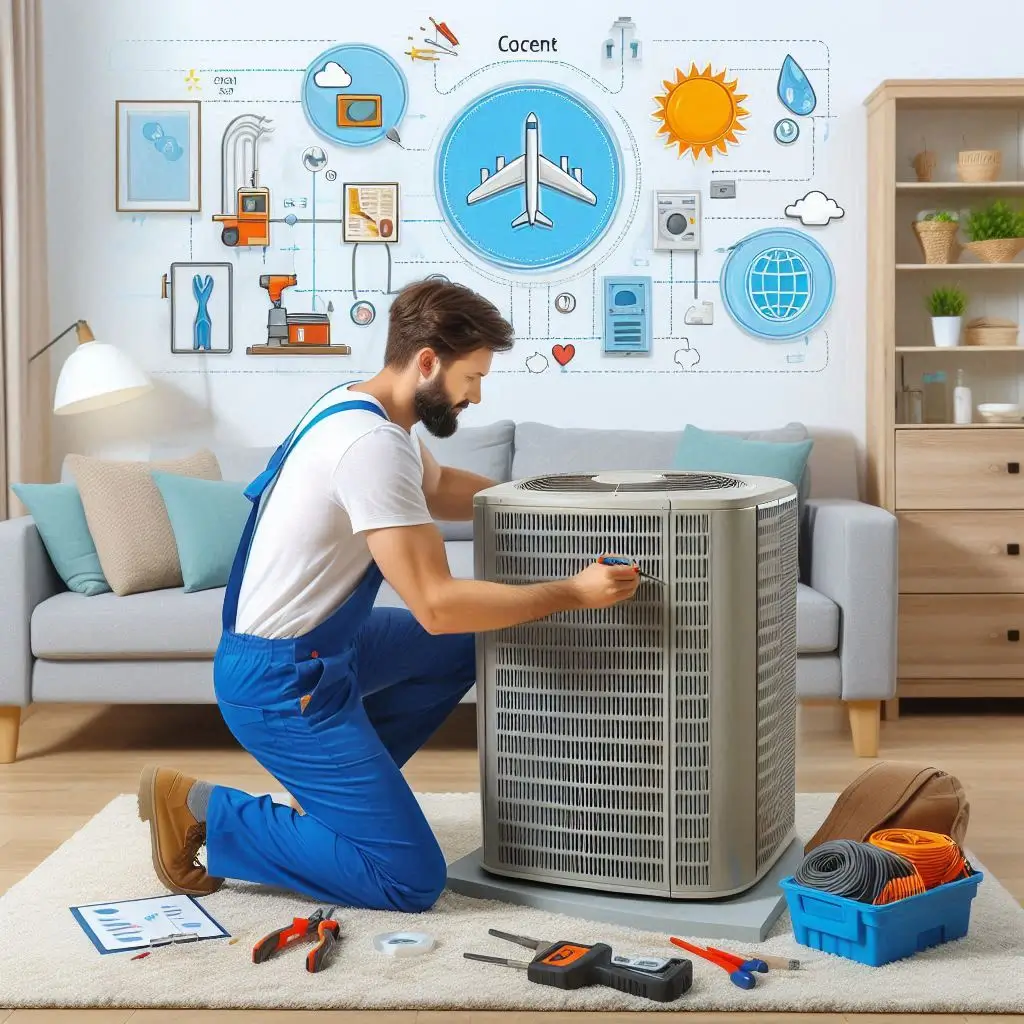
Conclusion
In conclusion, understanding the central AC installation cost involves evaluating multiple factors such as the size of the system, ductwork requirements, efficiency ratings, and labor costs. While the upfront cost can vary, there are several ways to reduce expenses, including shopping around for quotes, considering off-season installation, and taking advantage of rebates and tax credits. By carefully weighing these factors and planning ahead, you can ensure a smooth and cost-effective installation process. Investing in a new, energy-efficient central AC system not only enhances your comfort but also helps reduce long-term energy costs. Always make sure to work with trusted professionals who can guide you through the selection and installation process, ensuring you get the best value for your investment.


